Dubrovnik
Read more
Your competent partner in destination management. Coverage of Croatia, Slovenia, Bosnia & Herzegovina, Serbia, Macedonia, Montenegro, Kosovo and Albania.


Read more
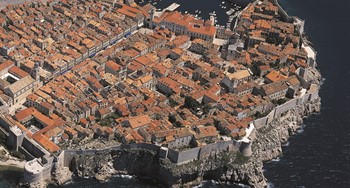
Dubrovnik, a city surrounded by walls built in the period from the 13th to the 17th century, is one of the most prominent tourist destinations in the Mediterranean. With foundations in the maritime trade, in the Middle Ages it became the only city-state in the Adriatic, thus competing with Venice. Thanks to the extraordinary wealth and diplomacy, the city achieved a remarkable level of development during the 15th and 16th century. It was one of the centres of the of the development of the Croatian language and literature, home to many famous poets, playwrights, physicists, mathematicians, painters and other scholars. Today is the pride of Croatian tourism, an elite destination and the most beautiful city of the Mediterranean.
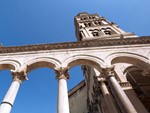
Read more
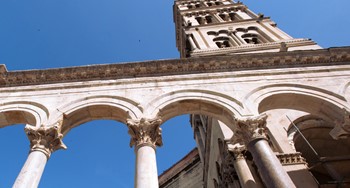
The foundations of the city of Split lie in the palace that was built by the Roman Emperor Diocletian at the turn of the fourth century AD. The palace, with the entire historical centre of Split, is on the list of World Heritage by UNESCO since 1979. Throughout the whole structure there are visible historical layers of ancient Rome through the Middle Ages to today. Today, the city is crawling with numerous cultural events such as film and theatre festivals, exhibitions, world-class museums and concerts. The symbol of Split is Marjan, a hill which, with its forests, trails for running, hiking and cycling, but also archaic churches, is a source of peace and relaxation.
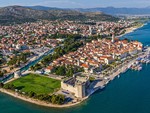
Read more

Ancient Greek and Roman cultures and later the Venetians formed Trogir’s rich cultural heritage. It is the best-preserved Romanesque-Gothic complex not only in the Adriatic, but in all of Central Europe. The town is situated in the centre of Dalmatia on the Adriatic coast. It is characterized by the sculptural artistry on the stone, and almost every house has a coat of arms, inscription, or some other style mark. Surrounded by parks on one side and the sea on the other, it preserves many historical artefacts and monuments.

Read more
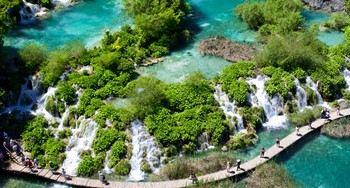
National Park Plitvice Lakes is a woody mountainous region with a string of 16 smaller and larger lakes of a crystal blue and green colour. They are supplied by water from numerous small rivers and streams and are interconnected with foamy cascades and forest falls. In the oldest Croatian national park are registered 1,267 plant species, 321 species of butterflies, 157 species of birds... The park also includes the highest waterfall in Croatia, Veliki slap that is 78 meters high. Aside from the height, it differs from other falls in its occurrence. It forms out of collapsing of the Plitvica stream down a steep cliff, while others are formed out of a lake.
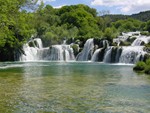
Read more

National Park Krka is named after Krka River that runs through the park. The national park is located in Central Dalmatia, only a few kilometers northeast of the Sibenik. It covers mostly unchanged area and multiple natural ecosystems. One of the liveliest parts of the park is Roski fall which dives in Lake Visovac from a height of 22.5 meters. There is also a mill complex, a valuable ethnographic heritage. Catering facilities are located alongside the waterfall, and offer visitors a real taste and aroma of this region.
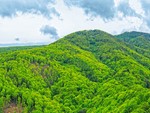
Read more
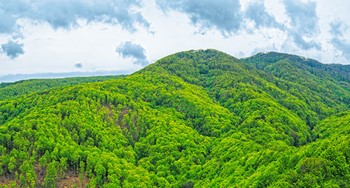
Medvednica Nature Park with the Veternica Cave and the forest reserve covers the mountainous region around Zagreb. The highest peak of Medvednica is Sljeme, with height of 1033 meters. It is known for its ski slopes on which the race Snow Queen is held. With unspoiled nature, there are two towers, Medvedgrad and Susedgrad, built in the 13th century. Also, Castle Oršić near Gornja Stubica was built in 1756. on the foundations of a fortress built in the 13th century. Today, the castle is renovated and converted into a Museum of Peasants’ Revolt.

Read more

Velebit Nature Park is the largest protected area in Croatia that includes most of the Velebit mountain range, and is also on the UNESCO’s list of international biosphere reserves. It is the most significant endemic centre of flora and mainland fauna in Croatia. Inside of the park are situated two national parks, the National Park and Northern Velebit National Park. ''Kuda's Bridge'', the oldest preserved crossing over the river, overlooks the magnificent waterfalls and travertine cascades of Krupa. With numerous remains of cultural monuments, the complex includes three caves with a total of 4 km of explored canals.
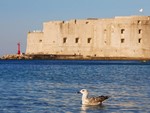
Read more

Lighthouses situated along the Adriatic coast from Istria to Dubrovnik, in an oasis of romance, peace and tranquillity, guarantee a unique and uninterrupted summer holiday. They were built in the early 19th century and quickly became the largest and most important facilities of maritime signalling. With lighting devices, lighthouses also include a living space for lighthouse keepers and their families. Our lighthouse keeper will present the joy of life in a lighthouse and tell you their history, human destiny and legends.
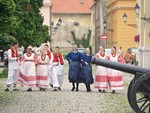
Read more

Eastern Croatia – Slavonia is an ideal destination for tourists who want to spend their holidays in peace and quiet, away from everyday stress and traffic jams. It is surrounded by three rivers: Sava, Drava and Danube, and they form a space crowned by forests, meadows and hills. Slavonia is famous by sunflower fields, festivals, Dunav river cruises, special ham sausage Kulen and wines - The Ilok Winery (Ilok is a Croatian town on the Danube river) can boast that in 1954 Great Britain ordered 11,000 bottles of wine for the official ceremony of coronation of the British Queen Elisabeth II.
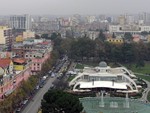
Read more

Tirana became Albania's capital in 1920. The city has many public institutions, public and private universities and is a centre of political, economic and cultural life. The fall of communism resulted in economic growth and it also opened the country to the world. Today, Tirana is the major industrial and financial centre of Albania.
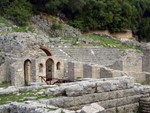
Read more
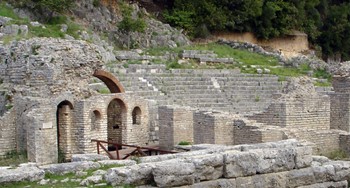
Butrint was inhabited since prehistoric times and has seen the Greeks, Romans, Byzantines, and Venetians during its development. It was abandoned in the late Middle Ages but the ruins still display each period and rule. The area around Butrint is one of the most important areas of biodiversity in Albania, and is declared National park. Since 1992 it is on the UNESCO's list of protected world heritage monuments.
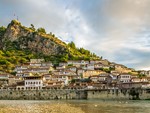
Read more
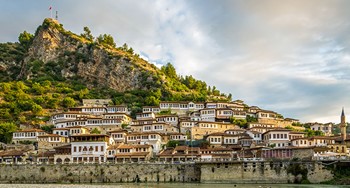
Berat is located in central Albania. With its castles, Byzantine churches and several mosques, it witnesses the coexistence of different religious and cultural communities throughout the centuries. Because of its unique and rich architecture, in 1961, was declared the Albanian ''Museum City'', and is also under UNESCO protection.
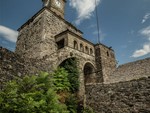
Read more

Gjirokastra in southern Albania is best known for two-storey houses from the 17th century, a bazaar, a mosque and two churches from the 18th century. Besides being called ''town museum'' because it has over 20 museums, it also earned the name ''stone city'' due to many houses that feature a distinctive local style. It was not until 2005 that Gjirokastra was registered in UNESCO.

Read more
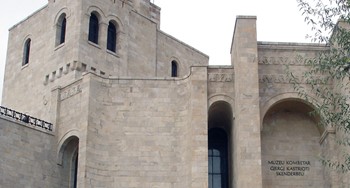
Kruje is located 20 km from Tirana, and was inhabited in 2nd century by the Illyrian tribe Albani. It was once the capital of Albania. Since 1982, Skanderbeg's cult has its own official centre- National Museum in Kruja and was built on the ruins of the former medieval fortress in which Skanderberg himself dwelt for 25 years. Museums Kruje consist of the Museum of Skanderbeg, located near Fort Krujë, and National Ethnographic Museum.
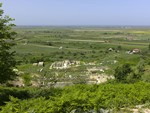
Read more
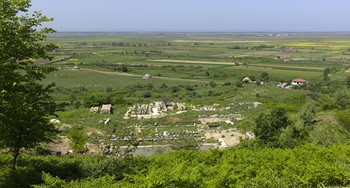
Apolonia was founded in 588 BCE by Greek colonists from Corfu and Corinth, on a site initially occupied by Illyrian tribes. It is one of the most important archaeological sites in Albania and has a status of the Archaeological Park. Apolonia, the most visited place in Albania, was once an important maritime port.
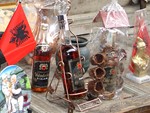
Read more

Skanderbeg is Albanian's greatest historical figure, a symbol of national unity and resistance to foreign invaders. Skanderbeg's famous helmet, decorated with goat head and horns, which is a part of the Albanian coat of arms, to Albanians represents a royal crown. Albania is well known for its Scanderbeg cognac, unique in flavour and aroma.

Read more
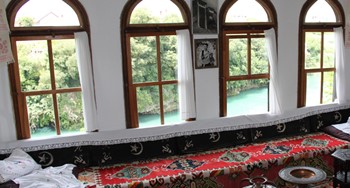
The old town Mostar has an enticing quality, particularly on Neretva River, which often leads one to sit for hours and just soak up the sights, sounds and views of the famous Old Bridge. Unlike most tourist places in the world, café and restaurant owners will never ask you to leave even if you've been sipping Bosnian coffee for hours. The old town hides countless coppersmiths and artists at work as well as several fascinating jewellery shops.

Read more

The breathtaking endless hills and towering mountains around Sarajevo have, in a sense, always isolated the city, creating a timeless world, which has always kept its doors open to the rest of the world. Although Sarajevo is a capital city typified by the hustle and bustle of everyday life, it also possesses a unique ambience that seeps into the soul and captivates you with proverbial tradition of hospitality.

Read more

Počitelj represents one of the few urban ensembles in Bosnia and Herzegovina that were preserved in their integrity to the present times. It was developed through the several phases of the history beginning with the medieval period. Its significant strategic role from the 13th to 17th century gave its inhabitants the power to build one of the most important, and best preserved ensembles within the city walls in the region.
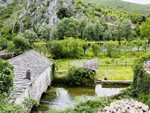
Read more
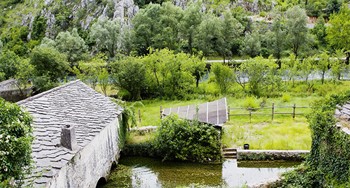
Blagaj is situated at the spring of the Buna river and a historical tekke (tekija or Dervish monastery). The Blagaj Tekija was built around 1520, with elements of Ottoman architecture and Mediterranean style and is considered a national monument. Source of the Buna river is the biggest karst spring in Europe. It is a treasure trove of history and nature, of former Bosnian culture and green river.
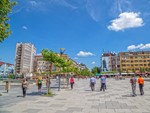
Read more
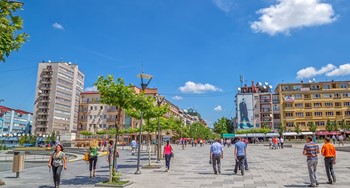
Prishtina is a grey, traffic-jammed city but people live, work, and party easily. Visitors will find some significant sights, the friendliness of the residents and very good restaurants. Prishtina is the capital of Kosovo, and therefore the administrative, cultural, educational and economic centre of the country.
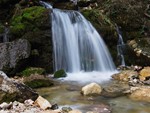
Read more
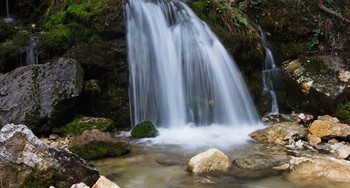
The city of Peja, towered by the mighty Cursed Mountains, is the cradle of life in the area totally off the beaten track. The city became an important religious centre of medieval Serbia under Serbian Emperor Stefan Dusan. In 1346 Dusan made Peja the centre of Serbian Orthodox Church, and it kept that status until 1766. Peja has a rich cultural and historical heritage.

Read more
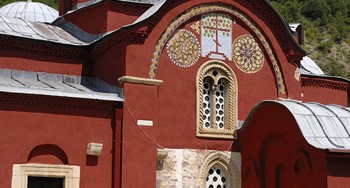
Pecka Patrijarsija Monastery was built in 13th century and it is a monastery with female nuns only. Since 2006, the complex was added to the UNESCO’s list of World Heritage sites in Europe. This Serbian church monastery is located near the town of Pec and consists of three churches that have been renovated recently.
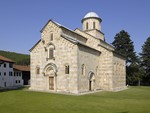
Read more

Decani is the largest monastery in the Balkans, located in the medieval village close to the border with Montenegro. A Cathedral inside the monastery keeps the largest preserved Byzantine art fresco. The church is distinguished by its size and Rask, Romanesque, and Gothic forms. UNESCO enlisted the monastery to the list of World Heritage Sites in Europe in 2004.
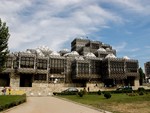
Read more
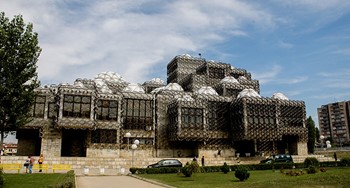
In 2004 Gracanica Monastery became a part of UNESCO’s heritage. It is located in Gracanica, with a distance of about 5 kilometres from Pristina. It was built in the 14th century and is one of the most important monasteries of the Serbian Orthodox Church. St. Mark's Church in Belgrade was built on the model of the church of the Gracanica Monastery, as well as the so-called ''Hercegovacka Gracanica'' in Trebinje.
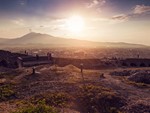
Read more
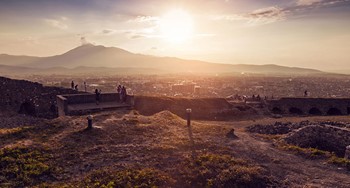
Prizren is a town of about 70,000 people, known as an open-air museum and is one of the most beautiful towns in Kosovo. Thanks to the well preserved buildings, this city has become a very interesting town. It is the second largest city in Kosovo. If you are passing between Albania and Pristina, it is worth to get lost in this charming, filled with churches, Old Town without realizing that hours pass.
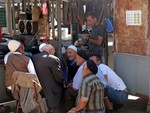
Read more
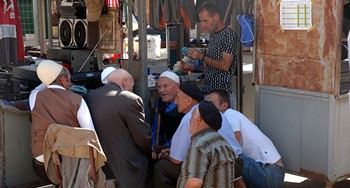
Body language – the locals shake their heads to mean “Yes”, and nod to mean “No”.

Read more
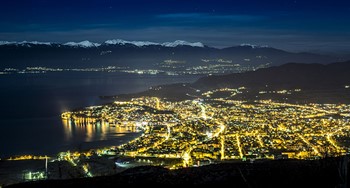
Ohrid is the lakeside city and with its Old Town and major attractions, all within walking distance, offers the opportunity to mix history, culture and relaxation, all against imposing mountains and shimmering waters. Since 1980 the Ohrid Lake and Ohrid are on the UNESCO’s World Heritage list as a cultural and natural monuments. Among those monuments, some of which are thousands of years old, stands out Samuil's Fortress from the 4th century BC. Solid walls and tower, long three kilometres, surround the complex and provide a view over Ohrid and its surroundings.
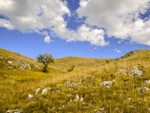
Read more
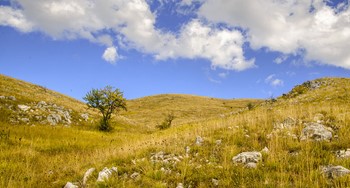
Galicica National Park is located between mountains Galicica and the two biggest Macedonian lakes: Orhidsko and Prepansko. The park deserves an extraordinary status because of the outstanding natural beauty and rich flora and fauna. When it comes to the plants in this area, here are almost all representatives of plant species in Macedonia, some of which are species-specific for the region Galicice. The park also has 26 endemic species of animals registered, and it is interesting to mention the 1,644 species of butterflies which is a high concentration in such a small area.

Read more

At the Ancient Megalithic Observatory Kokino the oldest archaeological finds date from about the 19th century BC, corresponding to the early European Bronze Age. The Kokino "megalithic observatory" should be distinguished from the wider Kokino archaeological site. It is located near the village of Kokino in the municipality of Staro Nagoricane in Macedonia, at an altitude of 1013 m. Due to its characteristics, in 2005 the US space agency NASA ranked it 4th (out of 15) in the list of such observatories.

Read more
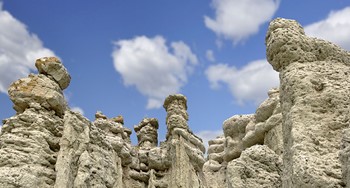
The stone town called the Stone Dolls of Kuklica consists of over 120 naturally formed stone pillars located in the village of Kuklica. This small village is located on the right side of the valley of the river Kriva Reka. Aside from being called Stone Dolls of Kuklica, locals also call it ''Happy wedding''. Thanks to its truly magical appearance, the local population for centuries recounts the legend of their origin. But aside from mystic stories and legends surrounding the formation of the strange pillars, the earth pyramid in Kuklica was formed as a result of natural erosion processes in the Holocene.
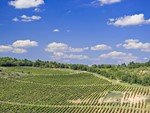
Read more
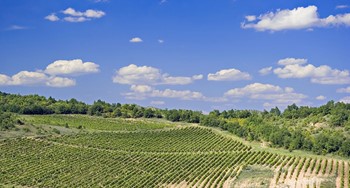
Tikveš is the centre of the Macedonian wine production which has been cultivated for more than 120 years. What makes this area ideal for wine production are Mediterranean climate of the valley of the river Vardar, numerous thermal and mineral springs, rich soil and wealth of lakes which with the help of the uplifts limit the impact of cold winds. In the vineyards are mainly grown different varieties such as cormorants, muscadine, smederevka, chardonnay, riesling and many others.
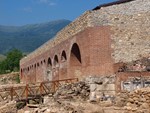
Read more
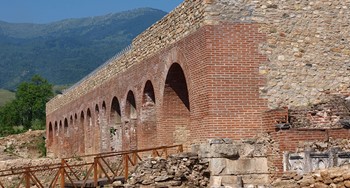
Heraclea Lyncestis is an ancient Macedonian town which ruins are situated 2 km south of the present-day town of Bitola. It was founded by Philip II of Macedon in the middle of the 4th century BC, after he had conquered the surrounding region and incorporated it into his kingdom of Macedon. The city was named in honor of the mythological Greek hero Heracles. Today, only a small fraction of Heraclea Lyncestis is unearthed, including a theatre, two fountains, courthouse, baths, bishop's palace and two basilicas. There is also a small museum with only a few items and a scale model of the city from the time when Heraclea was in full force.
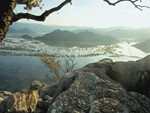
Read more

National Park Skadar Lake is located in Zeta – Skadar Valley and is surrounded by mountains, 7 km far from the Adriatic Sea. Two Thirds of Lake of Skadar is in Montenegro and rest is in Albania. Area of 370 to 530 square kilometres, depending on the water level, is the largest lake in the Balkans. Since 14th and 15th century, it is a cultural centre thanks to numerous cultural and historical monuments: the monastery complexes and archaeological sites.
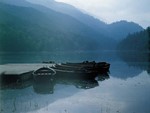
Read more
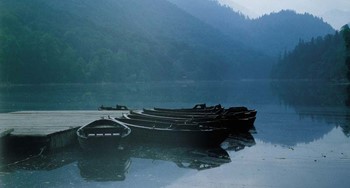
Although it is the smallest of four National Parks in Montenegro, National Park Biogradska Gora hides untouched forest with trees over five hundreds of years old, large mountain slopes and tops, glacier lakes at altitude of 1820 meters and easily accessible Lake located at the very entrance of Park. The park was established in 1952 and now houses 26 different habitats of plants with 220 different plants, 150 species of birds, 10 species of mammals and 86 species of trees.
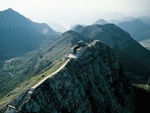
Read more
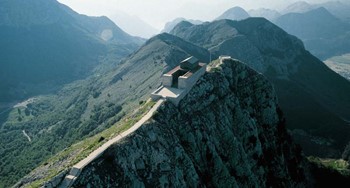
Lovcen is a mountain and a national park in southwestern Montenegro. The biggest and most important monument of Lovcen national park is Petar Petrović Njegoš's Mausoleum erected at Lake Crest. During his life, Njegoš built a chapel in which was later buried. The chapel was destroyed during World War II to be restored again in the twenties of the 20th century. Later, in 1970 the chapel was torn down so that a mausoleum could be built that was worthy of a poet. The project for the mausoleum was designed by famous Croatian sculptor Ivan Mestrovic.
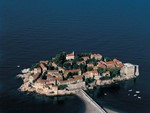
Read more
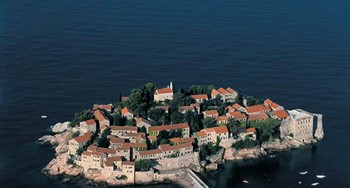
Sveti Stefan, the so-called hotel-town, is a resort town in western Montenegro, located in Budva Riviera. In 15th century, this islet was a small fishing town surrounded by walls. Today, the island turned into a luxury hotel-town whose old dilapidated houses adapted so as to retain full authenticity on the outside, while on the inside they are hiding one of the most luxurious hotel complexes.
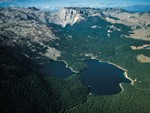
Read more
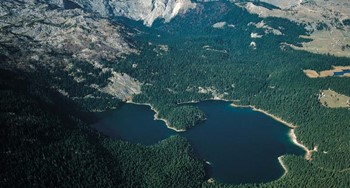
National Park Durmitor is a UNESCO’s massif and the name of a national park in northwestern Montenegro. The highest peak, Bobotov Kuk, reaches a height of 2,522 meters. Durmitor is the centre of Montenegrin mountain tourism, it features 18 glacial lakes and has 48 peaks. The National Park has seven areas with special protection regime: spruce and fir forest in the basin of Mlinski stream; a red pine complex in Crne Pode in the Tara Canyon; Black Lake with its forest; Škrčka lakes and narrow area of Sušica canyon; Barno lake; Zabojsko Lake; and the narrow valley of the river Tara.
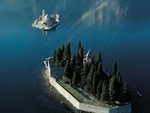
Read more
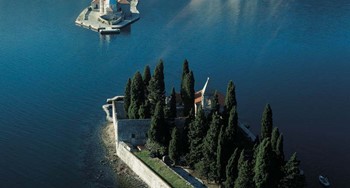
Perast is an old town on the Bay of Kotor in Montenegro. It is situated a few kilometres northwest of Kotor and is noted for its proximity to the islets of St. Juraj and Our Lady of the Rocks (Gospa od Skrpjela). During winter, Perast has more hours of sunshine than, for example, the famous tourist destinations on the Cote d'Azur. It stands out with its 16 palaces, mostly baroque, out of which the most famous palace Zmajević was built in 1664. Next to the palace is a church of Our Lady of the Rosary, which houses the mausoleum of Archbishop Andrew Zmajević. A special feature of the church is her slender baroque octagonal bell-tower on four floors, which is a unique example of this type of bell tower in the Adriatic.
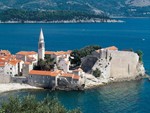
Read more
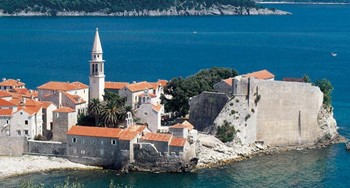
Budva is the centre of Montenegro's tourism, and is well known for its sandy beaches, diverse nightlife, and examples of Mediterranean architecture. Budva is 3,500 years old, which makes it one of the oldest settlements on the Adriatic Sea coast. Even as a tourist destination this city is known a long time since the first tourists arrived in 1923, and today Budva is often called the ''tourism capital'' because it is the most visited destination in Montenegro and one of the most visited in the Adriatic. Charming towns are widespread along Budva's Riviera, and among them are Sveti Stefan, Milocer and Petrovac.
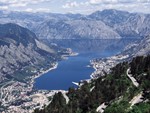
Read more

Sitting in one of the most beautiful bays in the world, Kotor, the town of traders and famous seamen, is the best preserved urban centre from the medieval period, typical for the towns that were built between the 12th and 14th centuries. The medieval architecture and numerous monuments of this cultural heritage instated the city on the UNESCO World Heritage List. Among them is the Cathedral of Saint Tryphon, built in 1166, known for its distinctive architectural solutions, decorative sculpture, ciborium and fragments of frescoes from the fourteenth century.

Read more
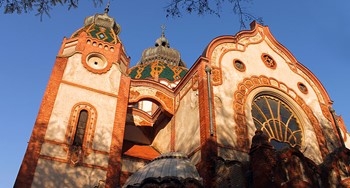
Subotica, in the north of the country in its Baroque attire resembles any central European city. Subotica developed into a modern Central European city at the end of XIX and the beginning of the XX century. Today, on the Day of Subotica they give out awards such as ''Honorary Citizen of Subotica''. Their municipality is a multi-ethnic environment with a population consisting of representatives of more than 20 different nationalities.
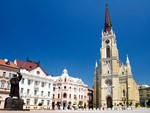
Read more
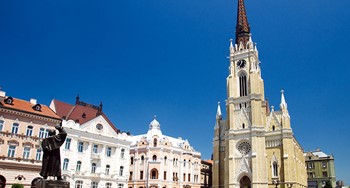
Novi Sad is the capital of the Autonomus Province of Vojvodina and is the second largest city in Serbia. Positioned on the Danube and with the seventeenth century Fortress, at the crossroads of major roads in the vicinity of Fruska Gora with 17 large-scale monasteries, attractive old town, numerous museums, has all the necessary diversity for a modern tourist centre. It is a city which slowly and urbanely spreads a life rhythm and shows tolerance of multi-ethnic Vojvodina.
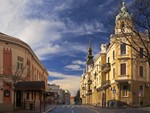
Read more
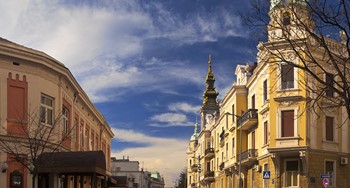
Belgrade, the capital of Serbia which never stays still in its mixture of Eastern passion for life and Western elegance. Some of the interesting facts related to Belgrade: first coffee house in Europe was opened in Belgrade, in Drocol in 1522 and served only black coffee. Belgrade Temple of Saint Sava is one of the largest Orthodox churches in the world. The temple was built exclusively from voluntary contributions, and although it is not fully completed is one of the most famous symbols of the city. Belgrade's ''Arena'' is one of the five largest hall sin Europe.

Read more
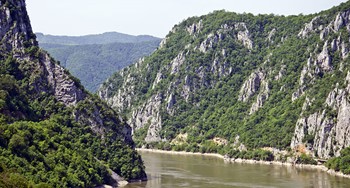
Located on the Danube River on the border with Romania in eastern Serbia, the Djerdap National Park hides some of the most impressive natural beauties and archaeological sites. The highlight of the national park is the Djerdap Gorge, known as the Iron Gate, stretching nearly 100 kilometres along the slopes of the Carpathian Mountains.

Read more
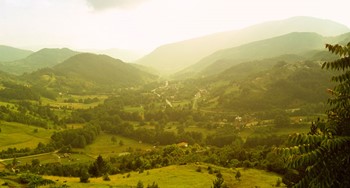
In Western Serbia, between the mountains of Tara and Zlatibor, there is Mokra Gora, a magnificent landscape of valleys, river gorges, mountain peaks and passes. The famous Sargan Eight, the railway, and Woodtown, the ethnic village, make this area even more interesting. Ethno village Drvengrad is situated on the mountain Mećavnik and was built according to the idea of the famous film director Emil Kusturica. Authentic log cabins were used for the construction.
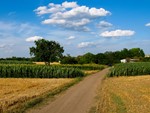
Read more
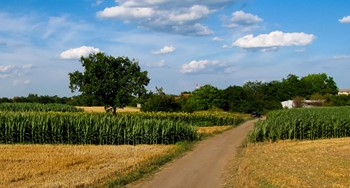
Kovacica naive art village - Naive Art from Kovacica (Slovaks village) is of great importance to the map of folk art and represents some kind of a naive metropolis. This small village, for more than forty years, amazes the world with its art, especially painting. That was the reason for establishing Gallery of Naive Art. The images displayed show the rural reality, but in a poetic spirit.

Read more

Oplenac Topola is a town and municipality situated in the Šumadija region of Serbia. The local St. George Church is the burial place of the Ducal and Royal Family of Serbia and Yugoslavia (the Karađorđevićes). Topola is famous for its yearly Oplenac vintage festival, (in Kings Wineyards) attended by several thousand visitors each year.
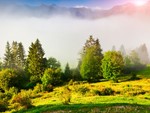
Read more
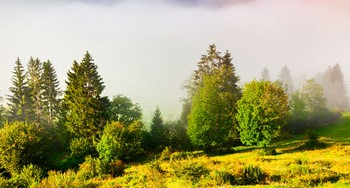
Triglav National Park stretches in the north-western part of the country that is south-eastern part of the Alpine massif. Mount Triglav is the highest peak of Julian Alps, stands amidst the national park towering above the valleys and two large rivers of the Soca and the Sava. It applies a special protective regime which is more stringent than in a similar protected areas. In addition to the Law of Triglav National Park, this unique area is also protected by the Constitution of the Republic of Slovenia, the Law of Conservation of Nature and the Alpine Convention with its protocols.
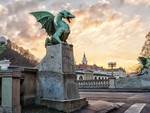
Read more
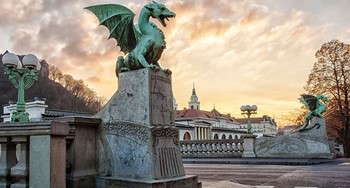
From the Old Town to Ljubljana’s numerous museums and galleries there is an extraordinary combination of interesting sights, from the architecture of Joze Plecnik’s to the historic atmosphere of the Old Town to the sporadic blast-to-the-past Yugoslav urban planning that all work together in unison to create the memorable city. Ljubljana is the capital of Slovenia, situated on the river Ljubljanica, a place which is bounded with interesting legends. The most famous legend is about a dragon – a symbol of the capital Ljubljana.
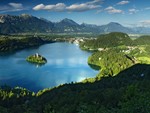
Read more
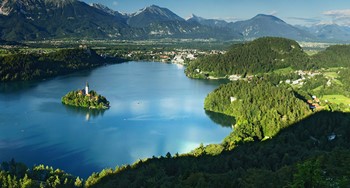
With no less than a millennium of history, Bled has fostered its old traditions and created new ones. Since the 1960s Bled has been a bustling tourist town. The beauty of the surroundings inspires holidaymakers, photographers, artists and musicians. Much more than just the iconic castle and island, Bled and surrounding mountains offer a multitude to see and do. Interestingly, the island where the Bled Castle is situated is actually the only real island in Slovenia.
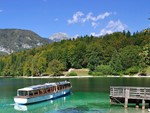
Read more

Bohinj is located in Julian Alps and its main feature is the periglacial Lake Bohinj. Bohinj has become a starting point for tourists for day trips, walks on the trails that run throughout the valley, and for mountaineering and climbing tours. It is also associated with the nearby Bohinj Railway, which includes the Bohinj Tunnel.

Read more
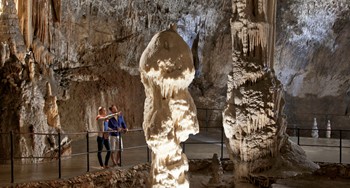
The Postojna Cave, biggest in Europe was found by Janez Vajkard Valvasor in the 17th century. It is also the most visited tourist cave in Europe that offers more than two kilometres of exciting rides with cave train, which with open wagons allows you to admire what nature has built millions of years ago. In the cave lives a blind olm (Proteus anguinus) which is called human fish due to its skin colour.

Read more

Skocjan is above all, a natural phenomenon of global significance, ranking side by side with the Grand Canyon, the Great Barrier Reef, the Galapagos Islands, Mount Everest, and others One of the largest known underground canyons in the world. This underground cave ie. canal was first investigated at the end of the 19th century. Its length is 3.5 km, and in some places is so wide that it creates halls of which the largest is Martel Hall.

Read more
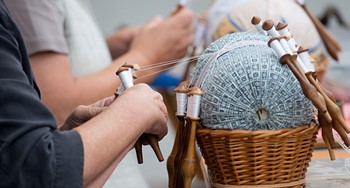
Idrija is notable for its mercury mines with stores and infrastructure, as well as miners' living quarters, and a miners’ theatre. The development of the city and its wealth depended on the value of mercury on the stock market. Together with the Spanish mine at Almadén, it has been a UNESCO World Heritage Site since 2012. Also here we have famous Idrija Lace Academy and Museum.
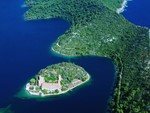
Read more
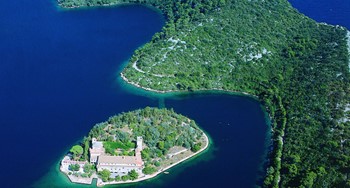
Deep bay created by higher sea level in post-glacial period that used to be a karst gorge that filled with sea through the system of karst cracks as well as through the narrow passage connecting it to the open sea through Soline Channel. The two lakes are connected by a channel 30 m long and 0.5 m deep. The richness of underwater life contains some rare and endemic species as well. One of the specific life forms of the lakes are numerous species of shellfish, like scallops, pen shells, date shells and many others, that find this environment favourable for their growth.
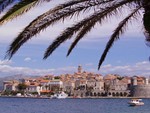
Read more

Korčula is the city on an island bearing the same name and is known as the birthplace of the famous explorer – Marco Polo. Encompassed by the city walls it has the red roofs that resemble the ones in Dubrovnik. Meet the centuries’ long work of stonemasons whose straightforward urban planning has turned architectural designs into real works of art. The island has been inhabited since prehistoric times, and traces of ancient life were discovered in many places. The oldest among them are the stone knives from the Neolithic period on the islet Badija near the town of Korcula. However, the best explored Neolithic site is Vela Cave in Vela Luka.
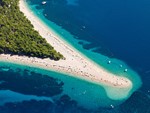
Read more
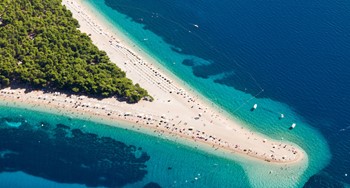
The southern coast of Brač Island hides an unusual and beautiful beach called Zlatni Rat, one of the most recognizable symbols of the Adriatic. Surrounded by clear azure sea, the pebbly horn protrudes for a kilometre into the sea. The beach is unique since, depending on the direction of the wind, it changes its shape and position. The same winds make the beach a very popular destination for windsurfing.

Read more
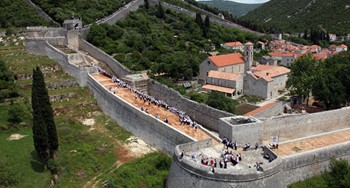
After the Dubrovnik Republic had acquired the territory of Pelješac Peninsula in 1333, they started building the defensive system whose original length amounted to 7000 metres and was in use till the beginning of the 19th century. The medieval city of Ston itself followed a carefully designed plan respecting the orthogonally aligned raster under the decision of the government of the Republic, which has made it one of the ideally planned cities in Europe.
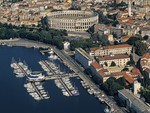
Read more

Pula’s thousand years old rich past can be seen at every turn of a corner in the old town. The most well-known and most significant monument dates back to the 1st century B.C., once used for gladiator fights, the Roman Amphitheatre Arena stands side by side with the Roman Colosseum. Roman architecture dominates the city’s centre with the Arch of the Sergii, the Gate of Hercules, the Twin Gates, the Temple of Augustus and favourite gathering place, dating back to the time of Emperor Augustus and now the main town square – the Forum, can be seen.

Read more
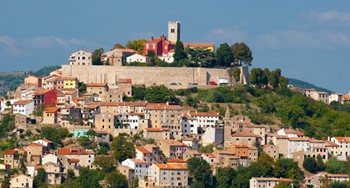
Situated above the river Mirna valley, developed out of an ancient city on a 277 metre hill, the medieval town Motovun is one of Istria’s hinterland symbols. A gothic belfry, 27 m high and built in the 13th century as a watchtower, dominates the entire landscape. Fortified with high city walls, Motovun preserves its rich historical and cultural heritage. The Motovun forest, extending along the river Mirna valley, is a popular habitat of prized white truffle, an underground fungus known for its aphrodisiac properties. Motovun is also considered a source of positive energy as three ley lines crisscross for the purpose of distributing positive energy through the ground.
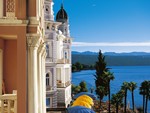
Read more

Opatija developed at the foothill of the Učka mountain near the Benedictine Monastery of St. Jacob in 1453, while her charm was discovered by the Rijeka patrician, Iginio Scarpa in 1844 where he built his summerhouse, today’s Villa Angiolina. The first hotel on the Adriatic opened in Opatija in 1884 and named the Hotel Quarnero – present day Hotel Kvarner. Opatija was fondly visited by kings, tsars, emperors, literati, writers, musicians – of whom should be mentioned Emperor Franz Joseph I, Sisi (Empress Elisabeth); writers - Anton Pavlovich Chekhov, James Joyce and musicians – Gustav Mahler and Giacomo Puccini. Even today, Opatija is recognised for its amazing architecture, luxurious villas and summerhouses, carefully tended parks and waterfront promenade “Lungomare” of 12 kilometres.
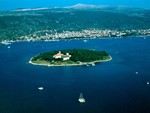
Read more
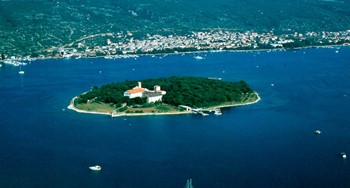
The town of Krk is one of the oldest urban settlements in Croatia. Its founders were the Illyrians from the Liburnian tribe Curicta. The town rates third in Croatia for its fortification walls after Ston and Dubrovnik. The wall dates back to Illyrian (Pre-Rome) era. In ancient times, the Kvarner islands were called Apsyrtidian or Electridian (Amber Islands) via which amber trading was conducted from the Baltics to the Mediterranean region. Entering the town is accomplished through four doors while, dominating the town, is the Krk Cathedral on an uplift overlooking the entire bay. The three churches built on the remains of Roman thermae in the 5th century, Franciscan and Benedictine monasteries with churches from the 12th and 13th centuries, is a treat for history lovers.
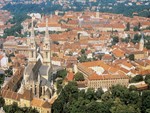
Read more
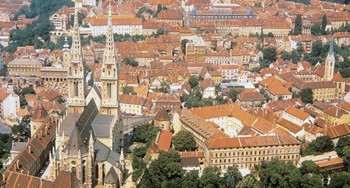
Visit this old Mid European city with 900 years of history. Feel its charming past and contemporary hustling present. The rich calendar of various events and the city's landmarks have placed Zagreb on the list of the popular European metropolises. Today, thanks to its history, Zagreb is full of monuments and captivating architecture. Upper Town (Gradec) is the historical centre of Zagreb with a main square of Saint Mark that was once a place of trade, and today is the political headquarters. Aside from the square, Upper Town has a number of museums and galleries. Capitol, another historical part of Zagreb, was formed around the Cathedral, which is considered to be the tallest structure in Croatia.
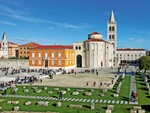
Read more
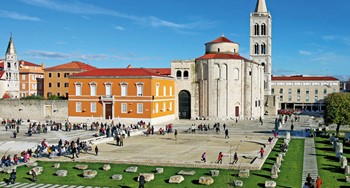
Centuries’ old cultural heritage of Zadar makes it a must-visit place to meet Croatian tradition and its influences. In more recent times, Zadar has become a hip destination for the young and their innovative artistic installations and music festivals. This popular Croatian tourist destination London Times proclaimed to be the ''entertainment centre on the Adriatic'', and Guardian ''the new Croatian capital of cool''.
